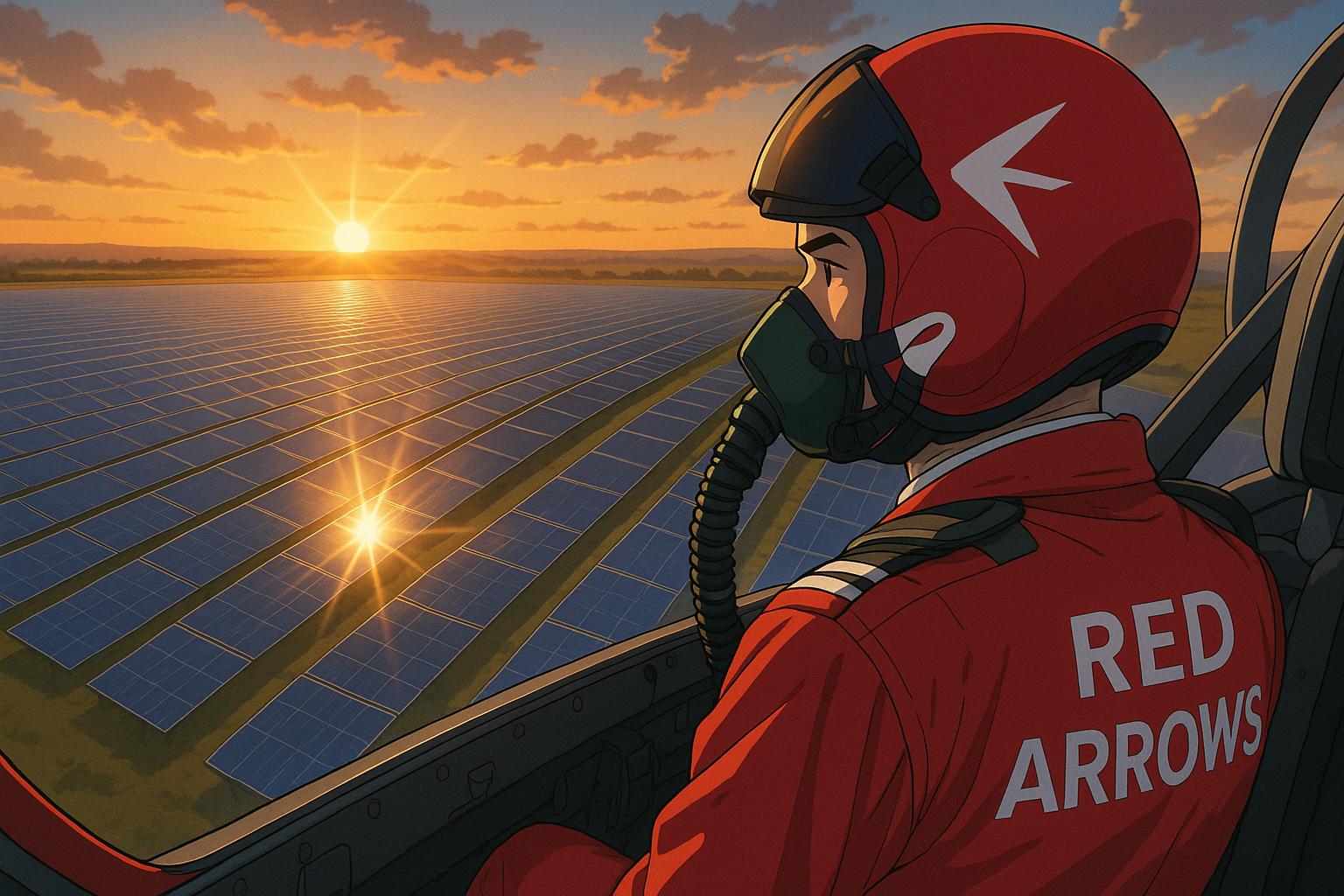A Conservative MP has expressed significant concerns regarding the potential hazards posed by solar farms to aviation safety, claiming that glare from solar panels could endanger RAF pilots, including those from the famous Red Arrows display team. Dr Caroline Johnson, the Member of Parliament for Sleaford and North Hykeham, has taken a vocal stance against plans for large-scale solar developments in her predominantly rural Lincolnshire constituency. She argues that not only could these solar installations compromise the safety of pilots operating nearby, but they may also adversely affect agricultural productivity.
In a recent session in the House of Commons, Dr Johnson highlighted the risks of sunlight reflecting off solar panel surfaces, which she asserted could dazzle pilots in flight. Her remarks directed attention to local military airbases, including RAF Waddington and RAF Cranwell, which play vital roles in training and operational readiness. “Glint and glare from reflective panels will cause problems for pilots flying over these areas,” she stated. Notably, she underscored the unique significance of these bases in historical contexts, alongside their contemporary relevance.
However, her comments faced rebuttals from other MPs. Labour MP Sarah Russell interjected, questioning whether the presence of solar panels in sunnier locales, such as Spain, has posed similar problems for pilots. Dr Johnson retorted with a rhetorical flourish, wondering if large passenger jets execute aerial manoeuvres akin to the Red Arrows.
This exchange reflects a broader tension in the UK over the development of renewable energy sources versus the safeguarding of critical infrastructures. Energy minister Michael Shanks assured the House that solar farms absorb light rather than reflect it, clarifying that planning processes already account for glint and glare through appropriate assessments.
The matter of solar farms and aviation safety isn't unfounded but needs careful consideration and research. Experts in aviation safety have pointed out that while glint—light reflections from solar panels—can pose risks, it is imperative to structure these installations wisely to mitigate such effects. Factors including the orientation and tilt angle of the panels, alongside their proximity to flight paths, are essential in effective planning. Furthermore, technological advancements such as anti-reflective coatings could significantly reduce glare, enhancing safety around solar installations.
While Dr Johnson's concerns raise valuable considerations about local concerns and the balance between land use for agriculture versus renewable energy production, it is crucial to remember that five substantial solar farms have already been approved in Lincolnshire, with more in the pipeline. Dr Johnson emphasised the agricultural significance of her constituency, often described as the “nation’s breadbasket,” responsible for a substantial percentage of the country’s vegetable production. The area’s agricultural prowess has proven resilient, with recent yields notably exceeding national averages.
As the UK continues to navigate its energy transition, discussions surrounding renewable energy installations will likely grow increasingly complex. Stakeholders must consider not just the immediate implications of such developments, but also their broader impact on communities, agriculture, and essential services, such as aviation. This conversation remains pivotal as the country presses forward in its commitments to combating climate change while preserving vital national interests.
Reference Map
- Paragraphs 1, 2, 4, 5, 6
- Paragraphs 4, 5, 6
- Paragraphs 4, 5, 6
- Paragraphs 4, 5, 6
- Paragraphs 4, 5, 6
- Paragraphs 4, 5, 6
- Paragraphs 4, 5, 6
Source: Noah Wire Services
